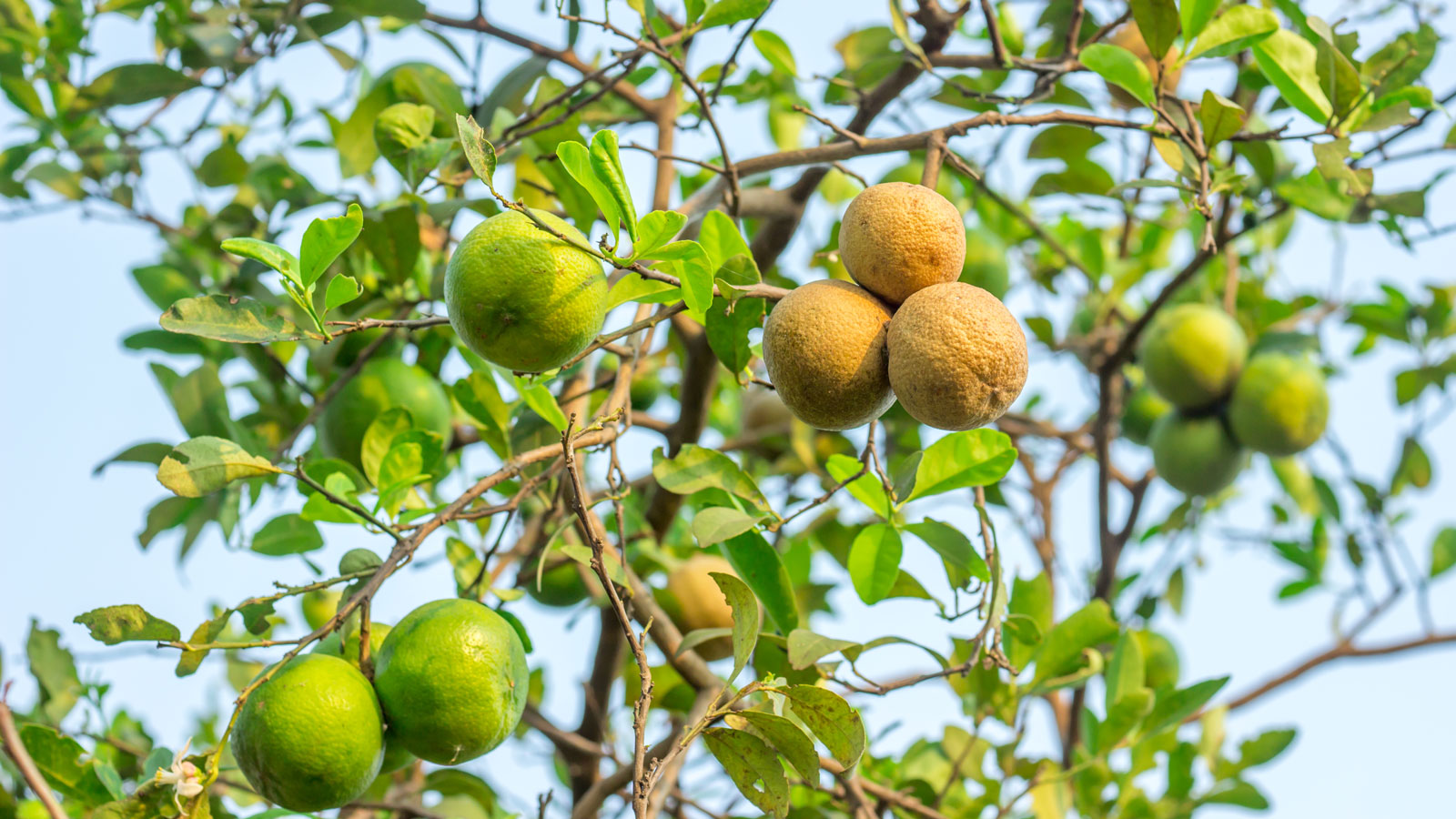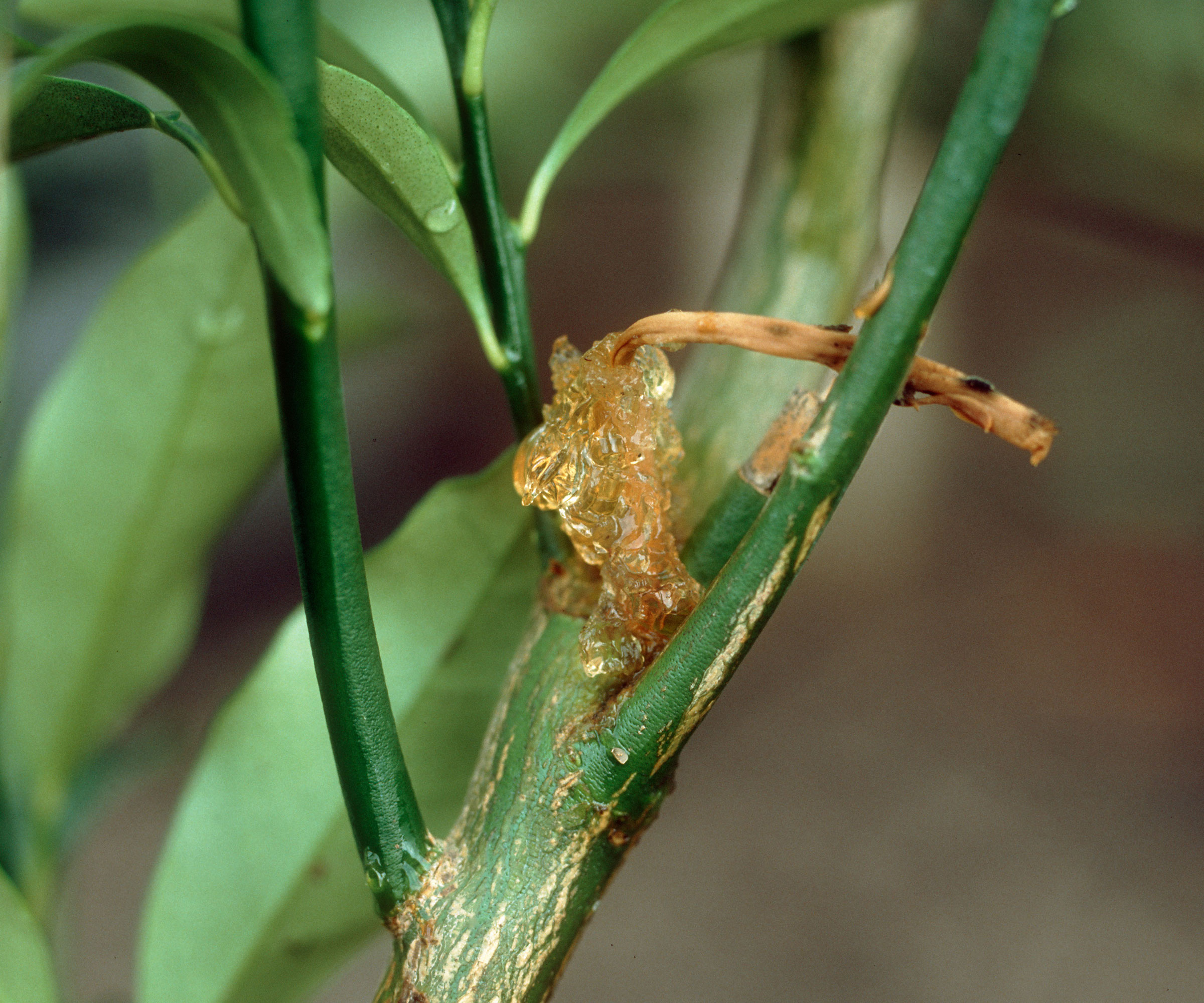Lemon Tree Problems? Five Common Lemon Tree Diseases To Avoid
Growing citrus trees like lemons can be a delightful way to cultivate years of homegrown fruits – if you protect against key lemon tree diseases. We reveal the key problems to avoid


Amy Grant
Lemon trees can be delightful whether grown as patio container plants or in the ground in the orchard. But there are more than a few lemon tree diseases and pests that can damage this citrus. If you are growing lemon trees, being aware of the most common lemon tree diseases and pests means you can recognize the symptoms and get the issue treated as quickly as possible.
Read on for a rundown on the five diseases of citrus trees your lemon is most likely to experience. These include lemon tree leaf diseases and citrus tree bark diseases.
Common Lemon Tree Diseases To Watch Out For
Diseases of lemon trees are not necessarily the fault of the gardener, so it’s more productive to be alert for symptoms than it is to feel guilt. But a few cultural care issues can also injure your lemon tree.
Be sure you understand key requirements, from sun exposure to soil type to airflow to maintain the lemon tree’s health. Water is often a problem with lemon trees. Too little, and the leaves turn yellow. Too much also turns leaves yellow – and can kill the tree. This is especially the case with container-based lemon trees and plants. Water orchard trees deeply once a week. But for trees in containers, water only when the soil is dry to the touch.
And don’t forget that lemons grown outdoors will need airflow, so don’t plant too close to other trees. But outdoor trees suffer more often from freeze damage. If your temps are dropping below freezing, cover up those trees with blankets or tree covers. Finally, citrus fertilizer is important, every three months please! Aside from that, our list below rounds up the main lemon diseases to look out for…

1. Armillaria root rot
Armillaria root rot is one type of root rot that can damage and kill lemon trees. It is caused by several different species in the Armillaria family of fungi. It enters the tree through the roots, and both the roots and lower trunk can decay.
This root rot will cause poor vitality and limited lemon tree growth. The leaves will turn yellow, then brown. The tree can subsequently die, although otherwise healthy trees will fight off decay longer. Ultimately, the tree may fall over as its roots decay. This is one of the most potent lemon tree diseases, since it can potentially reduce the life cycle of the tree. If you suspect armillaria root rot, have your tree inspected to see if it has become a hazard.
Sign up for the Gardening Know How newsletter today and receive a free copy of our e-book "How to Grow Delicious Tomatoes".
2. Bacterial blast
Bacterial blast is a bacterial disease caused by the bacteria Pseudomonas syringae. It is one of the key lemon tree leaf diseases. If you see black lesions on the leaf, it could be bacterial blast. The lesions ultimately girdle the leaf axil and the lemon leaves wither and fall. A mahogany colored scab forms on the diseased area. This leaf damage is worst on the side of the tree exposed to prevailing winds.
One of the more straightforward lemon tree diseases to prevent, this one is largely found where winter weather includes rain, chill, and wind, necessary to spread the bacterium. Lemon leaves and fruit are the parts usually hit. You can try a preventive spray specific to bacterial blast, but it is pretty expensive. You can often prevent this issue by planting windbreaks to protect the plants. Another tip is to remove any damaged twigs in early spring and limit fertilizer in fall.
3. Citrus nematode
Citrus nematode is caused by a microscopic worm (Tylenchulus semipenetrans) that attacks lemon trees. It is currently active in California, Texas, Arizona, and Florida. The nematodes live in soil and plant tissues.
Lemon trees infected by citrus nematodes have a condition called citrus slow decline. This means that the tree is gradually starved. It can die of this. Look for small fruit and small leaves, leaf yellowing and twig dieback. All of these result from root decay the nematodes cause. The disease is worse and develops most quickly in young trees and unhealthy trees. This disease is easier to prevent than to treat. You should only buy lemon trees with rootstocks that are resistant to nematodes.

4. Phytophthora gummosis
Phytophthora gummosis is but one of the diseases that the Phytophthora fungus can cause. It is a citrus tree bark disease. Look for sap that oozes from cracks in the citrus bark, making the tree look like it is bleeding. The bark eventually cracks and sloughs off and the lesions girdle the trunk.
As the disease progresses, the patches dry, crack and die leaving a dark, sunken area. Fruit may also be affected with brown and decayed spots. Moist, cool conditions cause the Phytophthora species causing gummosis to develop and spread. Young trees are the most vulnerable to this issue, but mature trees can also die.
What to do if you note oozing sap and cracking bark on your lemon tree? Strip off the diseased bark, then go deeper. Strip off a layer of healthy bark around the infected area. Prune the lower branches, those more than 2ft (60cm) from the ground. Allow all of the affected area to dry, then keep your eye on the area for several months, retreating if necessary.
5. Sooty mold
Yet another fungal disease is common in lemon trees, sooty mold. Sooty mold fungi are usually in one of these genera: Capnodium, Fumago and Scorias. This mold grows on lemon trees when certain insects (like scales) have deposited honeydew on the tree’s leaves. It is a sugary waste product of those resulting from scale feeding on plant sap.
You can wash sooty mold off of lemon tree foliage, and you probably should do so. But the key to getting rid of sooty mold is to remove the insects leaving honeydew. Some types of scale create honeydew on citrus leaves, and aphids are another source. For scales, use a horticultural spray to smother the eggs. Other insects that produce honeydew are whiteflies and mealybugs. An application of neem oil on the tops and undersides of foliage can also help to control pest numbers. You may need to repeat in 10-14 days, depending upon the extent of the infestation.
Frequently Asked Questions
When is My Lemon Tree Beyond Saving?
If you have tried everything you can to save a tree, but it isn’t getting better, the tree may be beyond saving. But don’t give up before diagnosing the problem and trying to solve it. Consult a reputable nursery for information on tackling these diseases. Most importantly, be sure to be consistent with your irrigation and feeding schedules.
Which Lemon Tree Pests are the Worst?
Any lemon tree pests that your tree has will appear to you to be the worst pests of all. That said, some can be controlled and eventually eradicated, whereas others are more pernicious and deadly if left unchecked. Citrus red mites can be amongst the most difficult to eradicate and can do significant damage to lemon trees. Monitor for pests as much as you can, and treat accordingly at the first signs of infestation.
Note: Any recommendations pertaining to the use of chemicals are for informational purposes only. Chemical control should only be used as a last resort, as organic approaches are safer and more environmentally friendly.

Teo Spengler is a master gardener and a docent at the San Francisco Botanical Garden, where she hosts public tours. She has studied horticulture and written about nature, trees, plants, and gardening for more than two decades, following a career as an attorney and legal writer. Her extended family includes some 30 houseplants and hundreds of outdoor plants, including 250 trees, which are her main passion. Spengler currently splits her life between San Francisco and the French Basque Country, though she was raised in Alaska, giving her experience of gardening in a range of climates.
- Amy GrantWriter